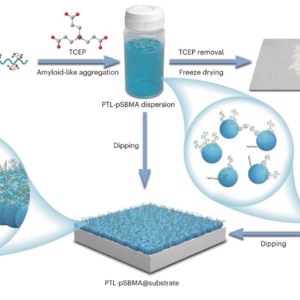A breakthrough in fabric cleaning: coating-at-will concept for stainproof fabrics
Citation
Zhouyue Lei, and Peiyi Wu*. A breakthrough in fabric cleaning: coating-at-will concept for stainproof fabrics. Sci. China Chem. 2024, 67, 744–745.
Surfactants are extensively used in daily life and industrial production, posing significant challenges to global sustainability. Household detergents, including dishwashing detergents and laundry, alone account for over 40% of the global surfactant market [1]. Over the past two decades, China has witnessed a remarkable annual growth rate of 0.36 million ton in synthetic detergent production, with output increasing from 3.48 million ton in 2001 to 10.77 million ton in 2021. Besides, wastewater treatment in the United States accounted for a staggering 4% of the country’s total electricity production in 2017 [2]. As the usage of detergents continues to rise, the burden of treating surfactant-laden wastewater has become increasingly onerous. In developed countries, it is estimated that the demand for electricity in wastewater treatment will surge by 20% over the next 15 years, leading to a consequential escalation in CO2 emissions and energy consumption. Compounding this issue, economically underdeveloped regions often discharge household detergents directly into the ecosystem without any pre-treatment, resulting in the long-term accumulation of surfactants within the environment [3]. This invasion of surfactants exerts significant adverse effects on aquatic organisms, animals, plants, and human populations, necessitating urgent attention.
Very recently, Yang and Fu et al. [4] present a groundbreaking concept known as coating-at-will (CAW). This concept revolutionizes conventional cleaning methods by offering a simple water-washing approach to effectively remove oil stains from fabric surfaces. In contrast to existing fabric surface modification techniques, the essence of the CAW concept lies in its ability to rapidly regenerate a durable anti-soiling coating on fabric surfaces through easy immersion or spraying, thus addressing the issue of coating detachment encountered by traditional modified fabrics after repeated washes (with unlimited coating regeneration). The foundation of this concept rests upon the rapid solubility, stable adhesion, and biocompatibility of amyloid-like proteins. They discuss the typical implementation process of the CAW concept, where a protein (lysozyme) is coupled with a zwitterionic polymer (poly(sulfobetaine methacrylate), pSBMA). The protein-polymer conjugate (Lyz-pSBMA) dissolve rapidly in water and trigger amyloid-like transformation (phase-transitioned Lyz-pSBMA, PTL-pSBMA) through a reaction with a reducing agent (Figure 1) [5]. A nanofilm with a thickness of 14 nm is effortlessly formed on fabric surfaces using methods such as immersion or spraying. The nanofilm exhibits exceptional characteristics, including outstanding transparency and biocompatibility. It is impressive to note that the nanofilm does not compromise the fabric’s comfort and visual appeal.
The most remarkable aspect of the CAW concept is its superior hydrophilic and oil-repellent properties, eliminating the need for detergents to remove oil stains from fabric surfaces. This has significant implications for sustainable fabric care, as it reduces water and electricity consumption by 40% to 50% and decreases carbon emissions by over 50%. The environmental impact of such a reduction cannot be overstated, making the CAW concept a potential game-changer in the textile industry.
Overall, this work presents a remarkable breakthrough in surface cleaning technology through the introduction of the CAW concept. By leveraging the unique properties of protein-polymers, the researchers have successfully developed a sustainable and stainproof coating for fabrics. This coating demonstrates excellent transparency, biocompatibility, and the ability to repel oil stains without the use of detergents. The implementation of this technology can significantly reduce water and energy consumption, as well as carbon emissions, contributing to global sustainability efforts. The findings of this study hold great promise for mitigating the adverse environmental impacts associated with surfactant usage, particularly in the context of wastewater treatment and ecosystem preservation.


